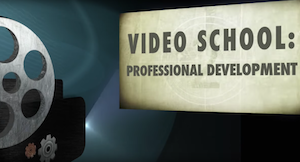
There’s no way to avoid it: summer break results in some level of learning loss.
Knowing what we know about the summer slide, we can also infer that COVID-19 is likely to make it worse. The good news is, we can plan ahead and use assessment to our advantage.
Choose an assessment that works
Mindful assessment is the cornerstone to successful scaffolding. When teachers know exactly what students have mastered, they know how to move students toward grade-level success. To do this, assessments must be trustworthy enough to guide these important decisions by meeting these criteria:- Assessment must screen and monitor progress.
- Assessment must be neutral and data centered.
- Assessment must produce reliable and valid data.
- Assessment must provide access to data in an accessible format.
Assessment is a tool educators use to make decisions
The purpose of assessment is to gather trustworthy, easily understood data in order to make data-driven decisions. It should be relatively quick (while still being thorough) and designed to measure and report what exists today. Sophisticated assessment systems may also provide some manner of analysis or projection, but ultimately teachers and expert coaches have the final decision in what scaffolding or intervention a student may need.Students are constantly growing. Frequent assessment helps monitor progress toward mastery. Students placed on a system of tiered supports will often move between tiers. Some students may also need different levels of support for different subjects.
Universal screening identifies broader areas in need of assessment, which educators can then dig deeper into with an assessment tailored for the subject. This is only the starting point. The data from multiple assessment rounds helps monitor whether the assessment is effective, whether students are growing, and whether or not they’ve achieved mastery.
As schools face multiple unknowns going into the fall, access to data is the cornerstone of smart scaffolding. Each educator on a student’s support team must be able to securely access the same data, even when they’re not in the same place. Data must be made available to a select few teachers, special education teachers, administrators, coaches, and support staff. This data falls under FERPA protection, which means only educators working with the student in question should be able to access the data.
Look for assessment solutions which provide reporting in a variety of media types. This might be charts, spreadsheets, or other impartial reports. The variety plays an important role in determining a course of intervention.
Why is it necessary to see data multiple ways?
A variety of data visualizations can challenge blind spots, encourage new solutions, even increase equity by fostering multiple relationships between students and educators. Data points are not the only important pieces of the assessment puzzle, after all. Each coach, teacher, and administrator will see different angles to the data, and that teamwork interpretation is what makes a difference for kids.This network of educators empowers students to succeed on their intervention journey. However, without a strong system of assessment and scaffolding, the network loses its data-driven decision-making power.
Smart assessment and reporting systems can completely alter a student’s growth trajectory. Even after an extra wild summer slide.
Follow-up resource: Making eLearning empowering
Here's how to find a silver lining in a less-than-optimal remote setting.WHAT'S NEXT FOR YOUR EDTECH? The right combo of tools & support retains staff and serves students better. We'd love to help. Visit skyward.com/get-started to learn more.

|
Erin Werra Blogger, Researcher, and Edvocate |
Erin Werra is a content writer and strategist at Skyward’s Advancing K12 blog. Her writing about K12 edtech, data, security, social-emotional learning, and leadership has appeared in THE Journal, District Administration, eSchool News, and more. She enjoys puzzling over details to make K12 edtech info accessible for all. Outside of edtech, she’s waxing poetic about motherhood, personality traits, and self-growth.




